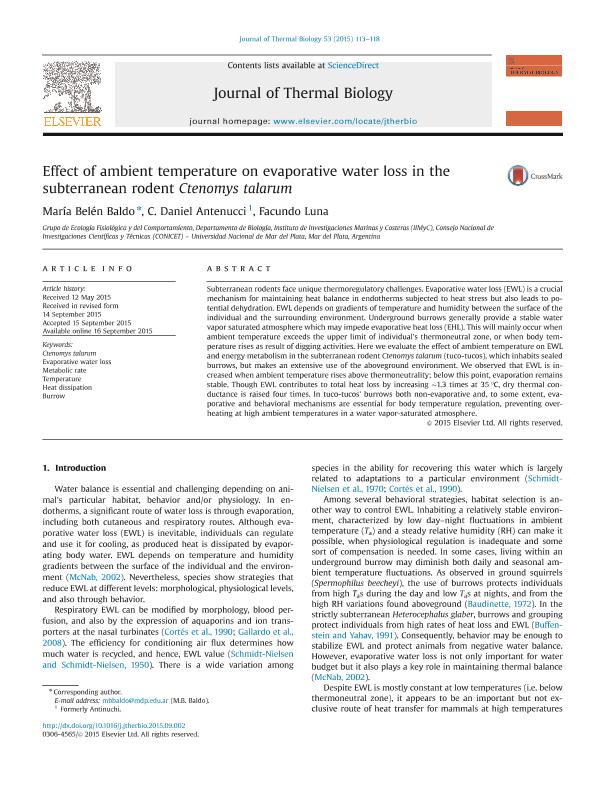Artículo
Effect of ambient temperature on evaporative water loss in the subterranean rodent Ctenomys talarum
Fecha de publicación:
10/2015
Editorial:
Pergamon-Elsevier Science Ltd
Revista:
Journal of Thermal Biology
ISSN:
0306-4565
Idioma:
Inglés
Tipo de recurso:
Artículo publicado
Clasificación temática:
Resumen
Subterranean rodents face unique thermoregulatory challenges. Evaporative water loss (EWL) is a crucial mechanism for maintaining heat balance in endotherms subjected to heat stress but also leads to potential dehydration. EWL depends on gradients of temperature and humidity between the surface of the individual and the surrounding environment. Underground burrows generally provide a stable water vapor saturated atmosphere which may impede evaporative heat loss (EHL). This will mainly occur when ambient temperature exceeds the upper limit of individual's thermoneutral zone, or when body temperature rises as result of digging activities. Here we evaluate the effect of ambient temperature on EWL and energy metabolism in the subterranean rodent Ctenomys talarum (tuco-tucos), which inhabits sealed burrows, but makes an extensive use of the aboveground environment. We observed that EWL is increased when ambient temperature rises above thermoneutrality; below this point, evaporation remains stable. Though EWL contributes to total heat loss by increasing ~1.3 times at 35 °C, dry thermal conductance is raised four times. In tuco-tucos' burrows both non-evaporative and, to some extent, evaporative and behavioral mechanisms are essential for body temperature regulation, preventing overheating at high ambient temperatures in a water vapor-saturated atmosphere.
Archivos asociados
Licencia
Identificadores
Colecciones
Articulos(IIMYC)
Articulos de INSTITUTO DE INVESTIGACIONES MARINAS Y COSTERAS
Articulos de INSTITUTO DE INVESTIGACIONES MARINAS Y COSTERAS
Citación
Baldo, María Belén; Antenucci, C. Daniel; Luna, Facundo; Effect of ambient temperature on evaporative water loss in the subterranean rodent Ctenomys talarum; Pergamon-Elsevier Science Ltd; Journal of Thermal Biology; 53; 10-2015; 113-118
Compartir
Altmétricas




